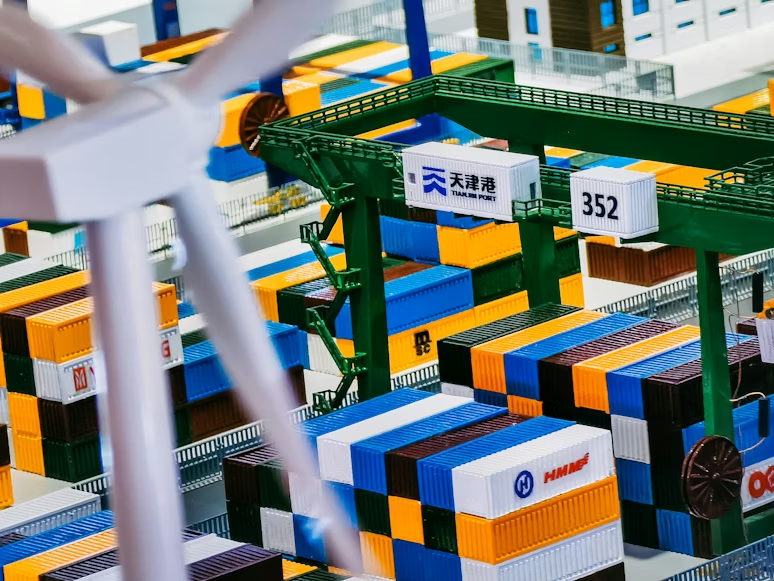In an era marked by ongoing transportation bottlenecks, container shortages, and escalating geopolitical tensions, the concept of supply chain resilience has evolved from a theoretical ideal to an operational necessity. The recent challenges, ranging from economic fluctuations to increasing cybersecurity threats and climate-induced disruptions, have underscored the critical need for organizations to shift from a reactive to a proactive stance in managing supply chain risks.
Understanding Supply Chain Challenges in 2024 As we step into 2024, it’s essential for businesses to strengthen their defenses against a spectrum of disruptive forces impacting supply chains. This demands a deep dive into understanding the vulnerabilities and potential breakdown points. Organizations are now prioritizing the integration of disaster recovery and business continuity plans, increasingly leaning on advanced technology, and seeking stronger partnerships with logistics providers.
A transformative trend, as noted in Gartner’s study “Balancing Sustainability and Resilience,” is the shift from cost-centric supply chain models towards frameworks that balance risk resilience with sustainability. This approach requires a fine balance – maintaining operational efficiency and profitability while being prepared for a range of unforeseen scenarios.
Emerging Trends and Risks in Supply Chain Management Several key trends and risks are shaping the supply chain landscape in 2024:
- Digital Innovation in Supply Chains: The complexity of modern supply chains is driving organizations towards enhanced resilience through digitalization. According to Catena Solutions’ “Supply Chain Trends & Insights: Innovation” report, there was a notable spike in investment in supply chain innovation in 2023, with a continued upward trend projected for 2024. Investments are focusing on increasing visibility, optimizing logistics operations, and boosting adaptability.
- The Integration of Automation and Robotics: The Gartner study “Hype Cycle for Mobile Robots and Drones” highlights the growing role of automation and robotics in supply chain management. Factors such as labor shortages and the quest for cost-effective solutions are propelling the adoption of mobile robots for various tasks, including warehouse operations.
- The Rise of Near-shoring: Geopolitical tensions and a push for greater supply chain transparency are driving the trend of near-shoring. This involves relocating production closer to consumer markets or company headquarters to enhance supply chain resilience. The Capgemini Research Institute’s report indicates a significant move towards diversifying supplier bases and localizing supply networks.
- Geopolitical Risks: Global political unrest continues to pose significant threats to supply chains. High-profile conflicts and events like disruptions in key shipping routes (e.g., the Red Sea) illustrate the deep impact of geopolitical dynamics on supply chain efficiency and costs.
- Economic Challenges and Inflation: The post-pandemic landscape, coupled with ongoing geopolitical tensions, has led to increased production and transportation costs, influencing the entire supply chain. McKinsey’s report “Navigating the new normal: Operations insights for 2024” forecasts a continued rise in supply chain costs due to these compounded factors.
- Climate Change and ESG Compliance: The growing frequency of extreme weather events is expected to exacerbate disruptions in global supply chains. Organizations are increasingly focusing on resilience in supplier networks and compliance with Environmental, Social, and Governance (ESG) standards.
- Cyber Threat Landscape: The evolving nature of cyber threats poses significant risks to supply chains. The BCI Supply Chain Resilience Report 2023 underscores the importance of robust cybersecurity measures across the supply chain network.
Enhancing Supply Chain Capabilities for the Future
In this evolving scenario, the role of technology in supply chain resilience cannot be overstated. The increasing use of AI and predictive analytics is transforming how organizations identify and respond to potential disruptions. These technologies enable more efficient supplier selection and risk mitigation strategies. Real-time monitoring tools are becoming indispensable in providing early warnings about issues in the supply chain, allowing for swift action to prevent severe disruptions.
Moreover, the growing emphasis on sustainability is reshaping supply chain operations. Companies are not just focusing on their own sustainable practices but are also scrutinizing their suppliers’ adherence to environmental standards. This shift towards green supply chains is a response to increasing regulatory requirements and consumer demands for environmentally responsible business practices.
The Human Element in Supply Chain Management
Despite the rapid technological advancements, the human element remains a critical factor in supply chain management. The challenges of recruitment and retention in the supply chain sector, especially in warehousing and logistics, highlight the need for skill development and employee engagement strategies. Organizations are exploring innovative approaches to workforce management, including the integration of advanced training programs and the use of technology to augment human capabilities.
Global Collaboration for Resilient Supply Chains
The complex nature of modern supply chains requires a collaborative approach, transcending organizational and geographical boundaries. Sharing best practices, insights, and innovations among supply chain stakeholders is crucial for building a resilient global supply chain network. This collaboration extends to governmental and non-governmental organizations, highlighting the need for a unified approach to address the challenges facing global supply chains.
The Road Ahead
As we look beyond 2024, it’s clear that the landscape of supply chain management is continuously evolving, influenced by technological advancements, environmental concerns, geopolitical dynamics, and economic fluctuations. Companies must stay ahead of these changes, adapting their strategies to remain competitive and resilient. Embracing innovation, prioritizing sustainability, and fostering collaboration will be key to navigating the complexities of the global supply chain environment.

















